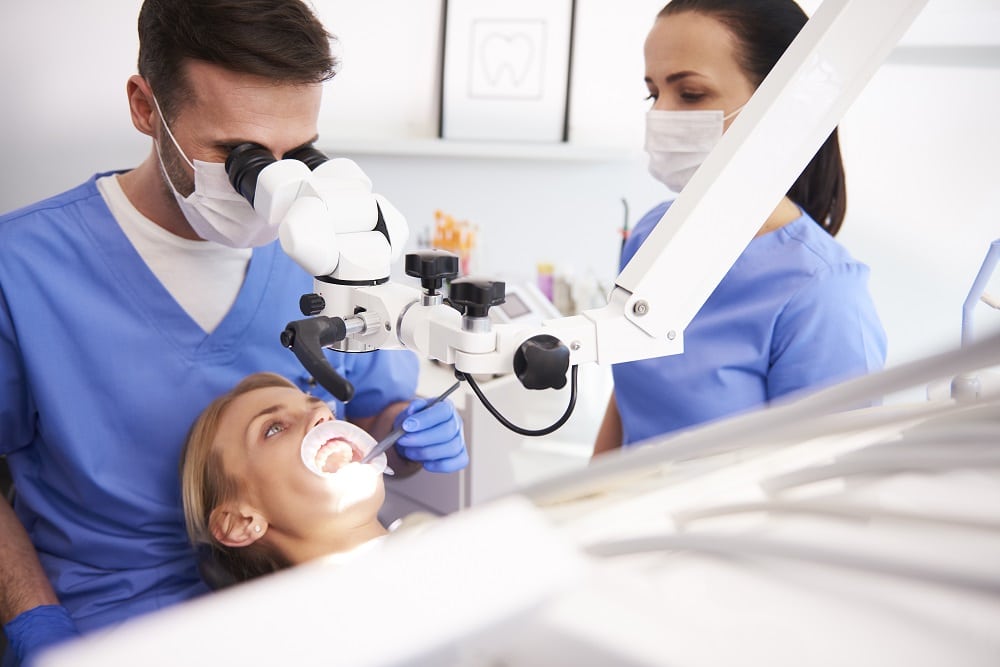Dental Dam
A dental dam is made of a thin, flexible latex intended to protect against direct mouth-to-anus and mouth-to-genital contact during oral sex. As such, it decreases the risk for transmission of sexually transmitted infections (STIs), which can occur during oral sex while still allowing the partners to enjoy stimulation to the clitoris and/or anus.
What Can It Protect Against?
Safe sex usually refers to penetrative sex, such as in vaginal penetration in heterosexual sex and anal penetration in homosexual sex. For this reason, condoms are readily available in pharmacies, drug stores, and even supermarkets and convenience stores.
But, sadly, penetrative sex isn’t the only type of sexual contact that spreads STIs like syphilis, gonorrhea, chlamydia, hepatitis, and human immunodeficiency virus (HIV). STIs can also be transmitted between persons through oral sex.
A dental dam can significantly decrease the risk of sharing body fluids, particularly saliva, vaginal fluid, and semen, which carry STIs during oral sex. Also, it reduces the risk of contact with fecal matter, such as in anal stimulation. Fecal matter can carry a wide range of pathogens, such as shigella and E. coli, as well as intestinal parasites.
What Can’t It Protect Against?
While a dental dam can prevent the exchange of bodily fluids, it may not effectively prevent the transmission of conditions and infections shared through direct skin-to-skin contact. As such, it might not be an effective method of barrier protection against:
- Human papillomavirus (HPV), which can be shared via direct skin contact with or without the presence of warts.
- Pubic lice, which can transfer from one person to the next even with a dental dam in place for as long as you came into contact with them.
- Herpes, particularly when the lesion isn’t fully covered by a dental dam resulting in direct contact during sex.
The bottom line: You should adopt other measures for safe sex to decrease your risk of getting STIs. These can include engaging in a monogamous relationship, using condoms, and getting regular health checks if you’re at risk.
Where And How To Use It
While dental dams aren’t readily available in stores, pharmacies, and even doctors’ clinics, these can be bought online and in adult stores. Like condoms, these come in a wide range of sizes, colors, flavors, as well as materials like latex and polyurethane. These are usually more expensive than condoms with prices ranging from $1 to $2 each, but be sure to ask the staff at health clinics first since these may be given for free.
Every dental dam has a basic design that makes it easy to use. But it’s essential to apply it correctly and carefully to prevent the formation of holes, tears, and cracks. Many of the precautions applied to condoms are true for dental dams.
- Tear open the package gently so as not to damage the dental dam itself.
- Unfold the dental dam, place it over your partner’s vagina or anus, and ensure that it completely covers the selected area. Use two dental dams, if necessary, over the vagina-to-anus area.
- Never stretch it or tightly press it against the skin since it will stick to the skin through static and/or moisture.
- Leave it in place until oral sex has finished. Replace it with a new one in case it becomes torn or wrinkled too much.
- Peel it off after oral sex and dispose of it in the trashcan.
Conclusion
Yes, a dental dam is a safe sex tool, but you should always protect yourself in other ways! You should also not reuse a dental dam even on the same partner.


